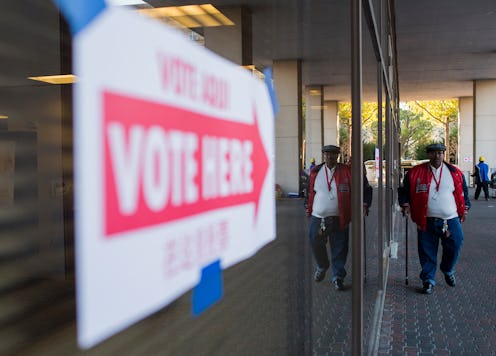News
The National Popular Vote Interstate Compact
As Election Day is fast approaching, the discussions surrounding the pros and cons of the Electoral College continue. Some states have started taking a stand to combat some of the problems with the Electoral College — i.e. how a president can lose the popular vote but still become the leader of our country — via the National Popular Vote Interstate Compact. But how many states have joined the National Popular Vote Interstate Compact (NPVIC), and what exactly does that mean for our elections?
First drafted in 2006, the National Popular Vote Interstate Compact was written as an agreement between states who promised to give their electoral votes to whichever candidate won the national popular vote, regardless of whether that candidate won the popular vote in that state itself. The idea is to ensure the president is elected on the basis of individual votes (aka the popular vote), rather than determined by the 538 electors in the Electoral College, as many people view the elevated voting power of the Electoral College as undemocratic.
In order for the NPVIC to fully trump the current Electoral College system, it requires the agreement from enough states to reach a majority of electoral votes — which is 270 electors. Currently, there are a total of 165 electoral votes onboard with NPVIC, which is roughly 60 percent of what's required for the compact to play out during elections.
There are 11 jurisdictions currently on board with the NPVIC, which includes 10 states and Washington, D.C. The states signed onto the compact include California (55 electoral votes), Hawaii (4 electoral votes), Illinois (20 electoral votes), Maryland (10 electoral votes), Massachusetts (11 electoral votes), Rhode Island (4 electoral votes), Vermont (3 electoral votes), Washington (12 electoral votes), New York (29 electoral votes), New Jersey (14 electoral votes), and the District of Columbia (3 electoral votes). The state of New York was the most recent to sign the bill into law, in 2014. In February 2016, the Arizona House of Representatives introduced the NPVIC bill through bipartisan efforts, and if officially signed into law, it would provide an additional 11 electoral votes for the movement.
Technically, even if the NPVIC collected the required 270 votes for activation, the 538 electors of the electoral college would still remain intact. The difference is that with this update, rather than following the state-by-state winner-takes-all method, in which electors give their votes to the winner of the popular vote in their state, electors would give their votes to the winners of the national popular vote. This would possibly give incentive to voters in deep red or blue states to head to the polls when they would otherwise think their votes didn't make a difference. It could perhaps even render the concept of battleground states irrelevant.
